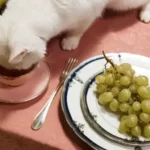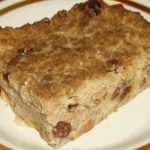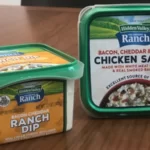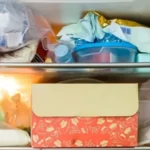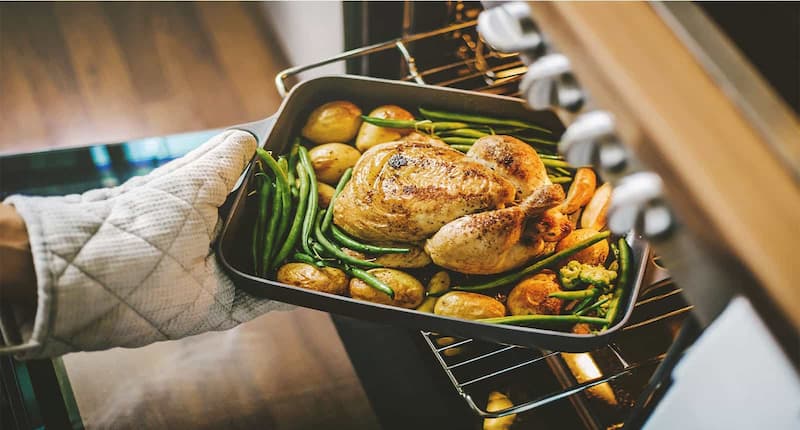
You’ve been anticipating this day for weeks—the big day of the dinner party—and you’re about to serve the food that everyone is so eager to eat. The food is overcooked and dry when you remove it from the oven that you had been using to keep it warm. What a miserable encounter!
Let’s discuss the subject: how to keep food warm in an oven?
To keep food warm in an oven: You should put food into a casserole dish with a lid or a baking dish with the food wrapped in aluminum foil. Put it in the oven and set the temperature to “warm.” Unless otherwise specified, ensure that the temperature is between 60°C and 93.3°C (140°F and 200°F).
Let’s read on.
Table of Contents
Keep Food Warm In The Oven
Several ovens come with a warming drawer. These are helpful because you can cook your food and then immediately put it into the drawer to keep it warm until all of your food is ready to eat.
Additionally, it allows you to keep using the oven to cook other things.
If not, make sure your oven is on the “warm” setting. Turning the knob is all it takes to activate this feature, and you won’t have to worry about the various temperatures. However, not every oven has these characteristics. If yours doesn’t, you can set the oven’s temperature to somewhere between 60°C and 93.3°C (140°F and 200°F).
No matter whether the oven is still on or has been turned off, there are a number of ways to keep food warm in it.
Casserole Dishes
The most popular types of casserole dishes are made of oven-safe glass or ceramic. They work well at stopping heat from escaping, retaining moisture, and promoting circulation when the temperature is low, between 140 and 200 degrees Fahrenheit (60 and 93.3 degrees Celsius).
If the oven has been on and you want to turn it off because you want to prepare some food later, feel free to do so. A fantastic product to use is casserole dishes. Due to their ability to retain heat, they keep food warm in the oven even after the oven has been turned off.
Just cover your casserole dish with dishcloths, place it in the oven after it has been turned off, and leave it there. Until you’re ready to serve it, your food will stay warm.
The Anchor Hocking 2 Quart Glass Casserole Dish from Amazon.com is what I suggest if you don’t already have one. This dish has good quality, a fair price, and effectively heats food.
Aluminum Foil
If you don’t have a casserole dish with you, don’t be concerned. You can still reheat your food in the oven if you have a baking dish and aluminum foil.
Even though you don’t have a lid, covering the top of the baking dish with aluminum foil will achieve the same results as a tight-fitting lid. If your food isn’t covered, the oven’s dry air will cause the outside and edges to become dry.
Heat is insulated by aluminum foil. Your food will stay warm for a longer period of time by maintaining circulation and heat inside the wrapped food. As a result, your food won’t dry out because it will keep moisture inside.
The Danger Zone
Cooking involves a lot of different factors, including food preparation and safety. You can become very ill from eating food that has been improperly heated or cooked. Even though cooking can be enjoyable, it’s important to be knowledgeable so that no one has to suffer from eating your food.
The “danger zone,” or the temperature range where bacteria growth occurs very quickly, is defined as any foods left at temperatures between 40 °F and 140 °F (5 °C to 60 °C). Bacteria within this temperature range, according to the Food Safety and Inspection Service, can multiply twofold in just 20 minutes.
Additionally, they advise against keeping food at temperatures of 90°F (32.2°C) or higher for longer than an hour.
The frightening thing is that food that is left in the danger zone can go from safe to unsafe to eat in just two hours. The bacteria levels in the food may not be detectable by your senses of touch, sight, or smell, but they will be too high for you to eat without getting sick.
Contrary to popular belief, keeping food warm in the oven is just as important as forgetting about it or leaving it out to cool.
You shouldn’t cook your food in the oven to the point where it’s overdone, but you also shouldn’t cook it to the point where it’s undercooked and unfit for consumption.
Instant-read thermometers are crucial for stopping food from spoiling. Use the thermometer after 15 minutes if you plan to keep food warm in the oven for longer than an hour to make sure it has reached a temperature of at least 140 degrees Fahrenheit (60 degrees Celsius). Increase the heat if it is not.
Food Safety Considerations
Food should be kept at a warm temperature for more reasons than just flavor. It also has to do with food safety. Temperatures between 40 and 140 degrees Fahrenheit are considered the “danger zone” for food where bacteria grows quickly. Illness may be brought on by that bacteria. The number of bacteria in food can double in just 20 minutes when the temperature is in the danger zone.
After you’ve cooked your food, anything that’s served hot should stay at a minimum internal temperature of 140 degrees. You run a higher risk of bacterial growth quickly if your oven doesn’t maintain the food at the bare minimum safe temperature. No matter how you keep food warm, always keep in mind the safe food temperature range.
Oven-warming Temperature
To keep food warm enough to remain in the safe temperature range without overheating or drying it out, the oven must be set at a temperature known as the “oven warming” setting. Heating the oven to 200 to 250 degrees Fahrenheit is usually a safe option to ensure it stays at the minimum internal temperature. Use a food thermometer to monitor the temperature so you can determine whether to increase or decrease the oven’s heat.
Oven-warming Time
How long can food be heated in an oven? For 15 to 20 minutes, the food should be fine in a heated oven. The longer you keep the food in the oven, the greater the chance of it decreasing in quality. Food can only be kept warm in the oven for a limited amount of time before it dries out, gets hard, or loses its flavor in some other way.
Bacterial growth is less likely as long as the food maintains a minimum temperature of 140 degrees. The warming period should be minimized as much as possible. Because of this, you can serve food that is both safe and delicious.
Prepare Food For The Oven
Always make sure your food is in an oven-safe container. Transferring hot takeout to a baking dish may be necessary if you bring it home. Depending on whether the skillet is oven-safe, food prepared in one may need to be transferred.
Covering the food with aluminum foil helps protect it from the drying heat and helps lock in moisture. Around the perimeter of the oven-safe container, tightly seal the foil. The food will stay hotter if the reflective side is positioned with the reflective side facing the food. See more about Can You Freeze Angel Food Cake?
What Foods Can Be Preserved Warm?
It is obvious that some foods are better suited to being kept warm for a longer period of time because they maintain their flavor, consistency, and allure. However, some meals should be consumed right away because they start to lose their appeal very quickly.
Rice
Under some circumstances, rice, a wonderful side dish, can be kept warm. Most rice cookers actually have a feature to keep the rice warm after cooking, which is how you should cook rice in the ideal world. The best method is this because no humidity is lost.
However, you cannot continuously leave rice in rice cookers. Pay attention to the typical amount of time rice should be cooked for. Any longer than this, however, and your rice could develop harmful bacteria, spoil, or present health risks.
I do not advise keeping the rice warm in the oven because it will turn crusty and dry and lose its flavor and appeal.
Steaks
Steaks can dry out very quickly, as was already mentioned, so keeping them warm can be a challenge. As a result, it is preferable to create new dishes with leftover steak rather than reheat it or keep it warm for a long time. You will receive a steaming hot meal as a result, without the steak becoming dry.
When you’re ready to eat it, wrap it in aluminum foil and keep it outside. Then, after preheating the oven, you can place it inside and wait for it to gradually reach medium, which should take five to ten minutes.
Chicken
The simplest meat to keep warm is chicken. As a result, it is frequently offered at lunch or dinner buffets and on airplanes because it does not have the same precise cooking point as beef and can be kept warm without drying out.
The oven is the ideal place for warming up a whole chicken.
Fish
Salmon and other fish with high fat content can be kept very warm. Fish is the second most easily kept warm food because the fatty layers prevent the meat from drying out for a long time.
Slices of salmon that have been grilled and can simply be warmed in the oven.
Pork And Loaf
Depending on the type and method of cooking of the meat you have, you can keep pork warm. When slowly grilled, for instance, pork loin can be kept warm. Meatloaf fits this description as well.
The meat does not dry out as quickly as a steak, which is only about the thickness of a finger, because there is much more meat inside compared to the edges and corners.
the served stuffed pork loin. Only cut the food that you will consume right away.
Vegetables
The ability to keep vegetables warm varies among different vegetables. Here, it’s crucial that the pieces aren’t sliced too finely or thinly. Paprika, zucchini, and tomatoes are examples of vegetables that can be kept warm and have a high water content.
Additionally, potatoes and winter vegetables in general, like broccoli or cauliflower, can be kept at a perfect temperature, though their outer skin may become a little firmer to the bite.
Vegetables grilled in the oven on a ceramic tray.
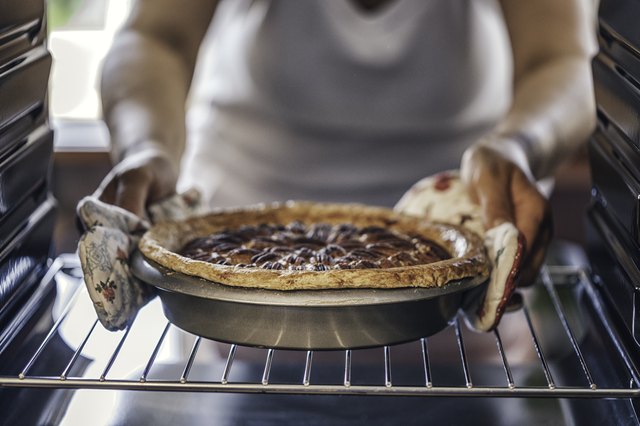
Commercial Food Warmer
In particular, if the food being cooked needs to be prepared for a while before it is expected to be served, restaurants and professional caterers need to be able to keep food hot., cooked in one location and transported to another to be served.
It goes without saying that they must be able to serve hot food and keep it out of the “danger zone,” which is the range between 40 and 140 degrees Fahrenheit. Bacteria can multiply at this temperature, doubling in as little as 20 minutes.
Despite the wide range of commercial warmer options, Cambro’s Insulated Food Transport Carriers are the most widely used.
Both electric and non-electric models are available, and both can keep food above 150 °F for up to 4 hours in the non-electric models and longer in the electric models.
Although these appliances are pricey and useless for the average home cook, you can still find them used on websites like eBay and Craigslist.
Pros
Easy to use and has hours of temperature retention.
In order to accommodate caterers, these devices are frequently made to be portable. In other words, they’re great if you want to cook at home, transport the meat to your destination, and still have it be piping hot when you dig in.
Cons
As previously mentioned, these gadgets are extremely expensive when purchased new and are not always simple to find used.
Hold At A Low Temp In The Oven
While not ideal, the oven can be used to reheat a variety of foods. The University of Nebraska-Lincoln’s Alice Henneman, MS, RDN, claims that you can keep food hot in an oven that has been preheated and set to 200°F to 250°F.
Personally, I like to keep my oven at a temperature of between 160 and 170 degrees Fahrenheit to keep food warm. Even though this is much higher than what is necessary for food safety, the food won’t continue to cook as a result.
Check your food frequently to ensure that it maintains a temperature of at least 140 °F if you plan to keep it hot for a prolonged period of time. Your food will continue to be hot while the oven is off due to residual heat in the oven. If your food is getting too hot and is in danger of drying out, you can turn off your oven for a while and then turn it back on.
For items like pulled pork, I find that this approach works best. Pork shoulder should be removed, rested, and then placed in a roasting pan with a lid and some of the braising liquid, i.e., the dripping’s reserved from the meat, and place in your preheated oven.
Pros
This is a great fallback when you don’t have a better option because almost everyone has an oven and a roasting pan in their home.
Cons
The method’s most glaring drawback is that your food will continue to cook as the heat is maintained. Steaks, chicken, and brisket should not be left out because they will dry out and turn tough. However, pork is much more understanding.
Keep Food Warm In A Faux Cambro
This technique, made popular by Meathead from AmazingRibs.com, involves using an everyday, very affordable cooler to mimic an expensive commercial food warmer, i.e., a Cambro.
The very quality that makes coolers so effective at keeping things inside cool is their high level of thermal insulation. However, the same thing applies when hot, warm foods are placed inside and this property is used.
A cooler is actually effective at preserving ANY stable temperature inside, whether it is cold or hot. And it is for this reason that they are so effective at keeping food warm for hours.
The Process for Heating Food in a Cooler:
The following things are necessary to use the “faux Cambro method”: a insulated cooler, some tin foil, and two or more towels. If you don’t have a cooler, you might want to look at our guides to the best soft cooler or, if you want something more portable and adaptable, our search for the best cooler on wheels.
Add a few gallons of hot tap water to the empty cooler just before your meat starts to cook. After at least 30 minutes, discard the water and replace the lid. By doing this, the cooler is warmed up to a comfortable temperature so that hot food can be placed inside. Without doing this, the food you put inside the cooler would initially lose some heat, which would delay the temperature rise.
After that, take your meat out of the cooker and, if you haven’t already, tightly wrap it in aluminum foil.
Put a clean towel or two in your cooler now, add your wrapped meat on top of the towels, add a few more clean towels on top of those, and then secure the lid.
Using this technique, your meat will stay hot for several hours.
After 4.5 hours in the “faux Cambro,” I removed the pork shoulders from the tinfoil, and there was still steam coming off the meat because it was so hot.
Pros
Have towels and a cooler? You have everything you need to construct a fake Cambro if you have access to hot water.
Cons
won’t continue to work forever. Your food will eventually cross the perilous line.
Low N Slow Bailout: Just Cook Fresh, Serve Hot
I frequently get asked what I would do if a large number of people showed up at my house for a tasty BBQ, and this isn’t a joke.
Generally speaking, I would grill steaks, chops, even hot dogs and hamburgers rather than unpredictably tender cuts of meat like pulled pork and brisket.
How can I serve food that isn’t cold to more than 20 people? Simple, I’d serve it hot off the grill.
Prepare all of your sides before your guests arrive. Prepared and chilled salads are a must. Prepare anything you’ll be eating, such as mashed potatoes or glazed carrots, in the oven or on the stove. Prepare your grill and have seasoned and ready-to-cook meat on it.
The only thing left to do is grill these quick-cooking cuts of meat and serve it as your guests take their seats.
Pros
The fact that all of your guests will be able to enjoy their food hot and at its ideal stage is undoubtedly the biggest benefit of cooking fresh. As an added bonus, your guests can take in the show while you casually prepare their dinner.
Cons
This is not a viable option for anything that will take hours to cook, such as a meal., brisket, but it will work for foods that can cook in 20 minutes or less like steaks, chops, hamburgers and hot dogs.
You won’t be able to take pleasure in the party’s beginning because you will be preoccupied with cooking.
Conclusion
In all honesty, it can also be challenging to keep food warm. Additionally, as was already mentioned, improperly warmed food can ruin all of your hard work in the kitchen. The strategies listed above have been very effective for me in the past, and I am sure they will be helpful to you as well. To find out which temperature range and rack level will be most effective for you, keep in mind that every oven is a little bit different.
If your initial efforts don’t yield the best results, get a little inventive and experiment to see if you can improve or worsen the situation. Also, kindly share your knowledge with the public and add a comment about how successfully you kept your food warm.
We appreciate you reading.


